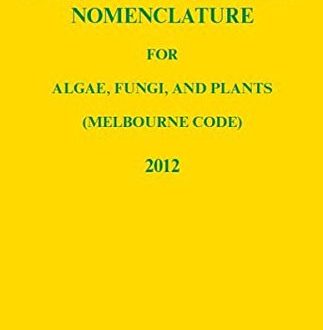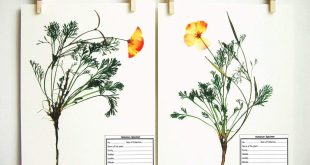Melbourne Code
Division II: Rules and Recommendation
Chapter II: STATUS, TYPIFICATION, AND PRIORITY OF NAMES
Section I: Status Definitions
Article 6
(*Some articles are cropped to avoid more detailed info unnecessary in our level.
If you wish, you can read the full code from the link here: Melbourne Code)
6.1. Effective publication is publication in accordance with Art. 29–31.
6.2. Valid publication of names is publication in accordance with Art. 32–45.
6.3. In this Code, unless otherwise indicated, the word “name” means a name that has been validly published, whether it is legitimate or illegitimate.
6.4. An illegitimate name is one that is designated as such in Art. 18.3, 19.6, or 52–54. A name that according to this Code was illegitimate when published cannot become legitimate later unless Art. 18.3 or 19.6 so provide or unless it is conserved or sanctioned.
6.5. A legitimate name is one that is in accordance with the rules, i.e. one that is not illegitimate as defined in Art. 6.4.
6.6. At the rank of family or below, the correct name of a taxon with a particular circumscription, position, and rank is the legitimate name that must be adopted for it under the rules.
6.7. The name of a taxon below the rank of genus, consisting of the name of a genus combined with one or two epithets, is termed a combination.
6.8. Autonyms are such names as can be established automatically under Art. 22.3 and 26.3, whether or not they actually appear in the publication in which they are created.
6.9. The name of a new taxon (e.g. genus novum, gen. nov., species nova, sp. nov.) is a name validly published in its own right, i.e. one not based on a previously validly published name; it is not a new combination, a name at new rank, or a replacement name.
6.10. A new combination (combinatio nova, comb. nov.) or name at new rank (status novus, stat. nov.) is a new name based on a legitimate, previously published name, which is its basionym. The basionym provides the final epithet, name, or stem of the new combination or name at new rank.
6.11. A replacement name (avowed substitute, nomen novum, nom. nov.) is a new name based on a legitimate or illegitimate, previously published name, which is its replaced synonym. The replaced synonym, when legitimate, does not provide the final epithet, name, or stem of the replacement name.
Credit: © 2012, IAPT — web-edition: © 2014, Paul van Rijckevorsel (all rights reserved)
Best safe and secure cloud storage with password protection
Get Envato Elements, Prime Video, Hotstar and Netflix For Free
Best Money Earning Website 100$ Day
#1 Top ranking article submission website
Section II: Typification
Article 7, 8, 9, 10
Article 7
7.1 The application of names of taxa of the rank of family or below is determined by means of nomenclatural types (types of names of taxa). The application of names of taxa in the higher ranks is also determined by means of types when the names are ultimately based on generic names.
7.2. A nomenclatural type (typus) is that element to which the name of a taxon is permanently attached, whether as the correct name or as a synonym. The nomenclatural type is not necessarily the most typical or representative element of a taxon.
Article 9
9.1. A holotype of a name of a species or infraspecific taxon is the one specimen or illustration used by the author, or designated by the author as the nomenclatural type. As long as the holotype is extant, it fixes the application of the name concerned.
9.2. A lectotype is a specimen or illustration designated from the original material as the nomenclatural type, in conformity with Art. 9.11 and 9.12, if no holotype was indicated at the time of publication, or if the holotype is missing, or if a type is found to belong to more than one taxon.
9.4. An isotype is any duplicate of the holotype; it is always a specimen.
9.5. A syntype is any specimen cited in the protologue when there is no holotype, or any one of two or more specimens simultaneously designated in the protologue as types.
9.6. A paratype is any specimen cited in the protologue that is neither the holotype nor an isotype, nor one of the syntypes if in the protologue two or more specimens were simultaneously designated as types.
9.7. A neotype is a specimen or illustration selected to serve as nomenclatural type if no original material is extant, or as long as it is missing.
9.8. An epitype is a specimen or illustration selected to serve as an interpretative type when the holotype, lectotype, or previously designated neotype, or all original material associated with a validly published name, is demonstrably ambiguous and cannot be critically identified for purposes of the precise application of the name to a taxon. Designation of an epitype is not effected unless the holotype, lectotype, or neotype that the epitype supports is explicitly cited.
Section III: Priority
Article: 11, 12
Article 11
11.1. Each family or taxon of lower rank with a particular circumscription, position, and rank can bear only one correct name, special exceptions being made for nine families and one subfamily for which alternative names are permitted.
11.2. A name has no priority outside the rank in which it is published.
11.3. For any taxon from family to genus, inclusive, the correct name is the earliest legitimate one with the same rank, except in cases of limitation of priority by conservation or where Art. 11.7, 15, 19.4, 56, or 57 apply.
11.4. For any taxon below the rank of genus, the correct name is the combination of the final epithet of the earliest legitimate name of the taxon in the same rank
11.6. An autonym is treated as having priority over the name or names of the same date and rank that established it.
11.10. The principle of priority does not apply above the rank of family.
Nomina conservanda
 Plantlet The Blogging Platform of Department of Botany, University of Dhaka
Plantlet The Blogging Platform of Department of Botany, University of Dhaka





